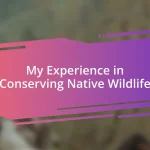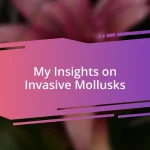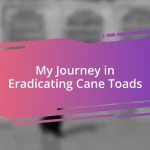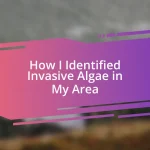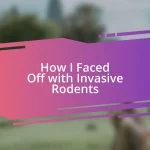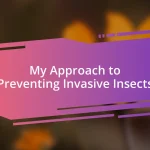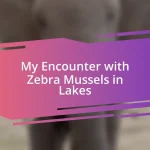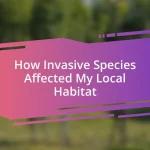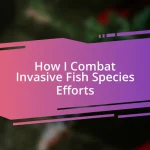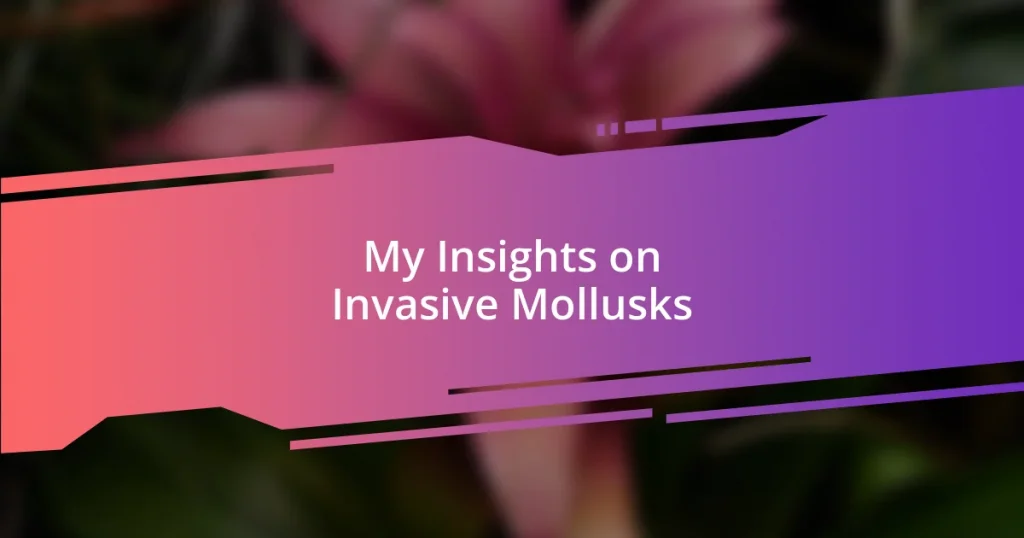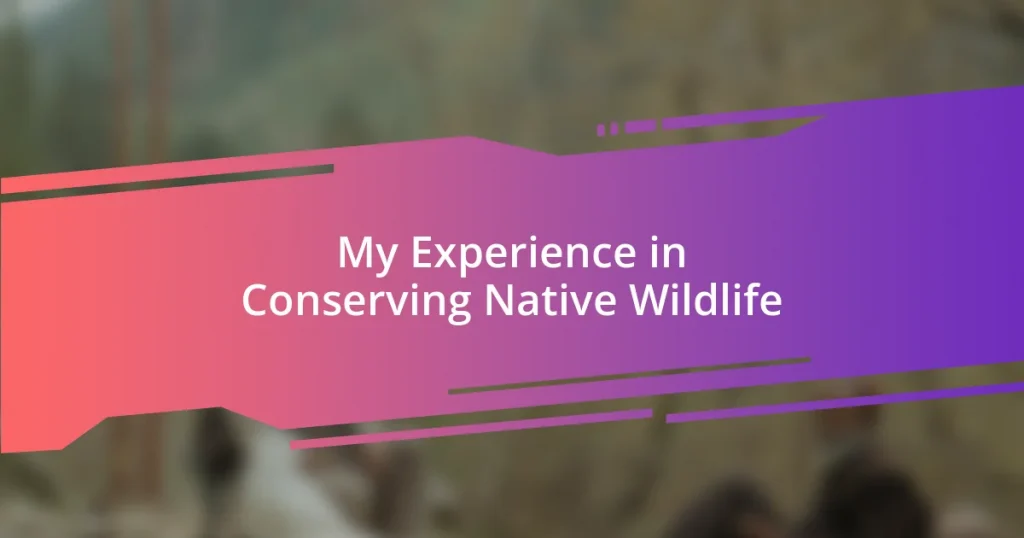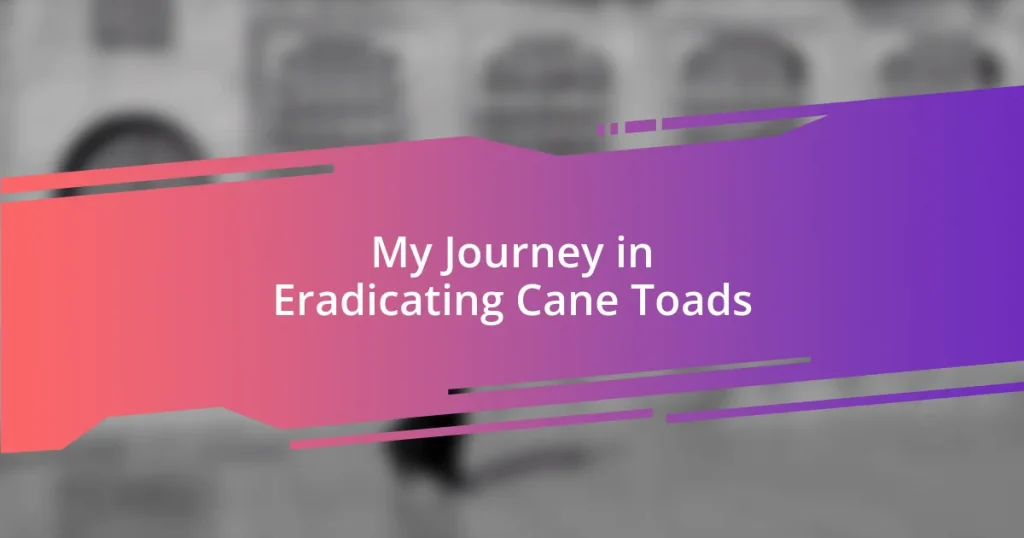Key takeaways:
- Invasive mollusks, such as zebra and quagga mussels, can drastically alter ecosystems, leading to loss of biodiversity and economic impacts on local communities.
- Effective mitigation strategies include community monitoring, public education, and implementing physical barriers to control the spread of invasive species.
- Successful case studies demonstrate that intentional ecological interventions and community involvement can lead to significant recovery of local ecosystems from invasive species disruptions.
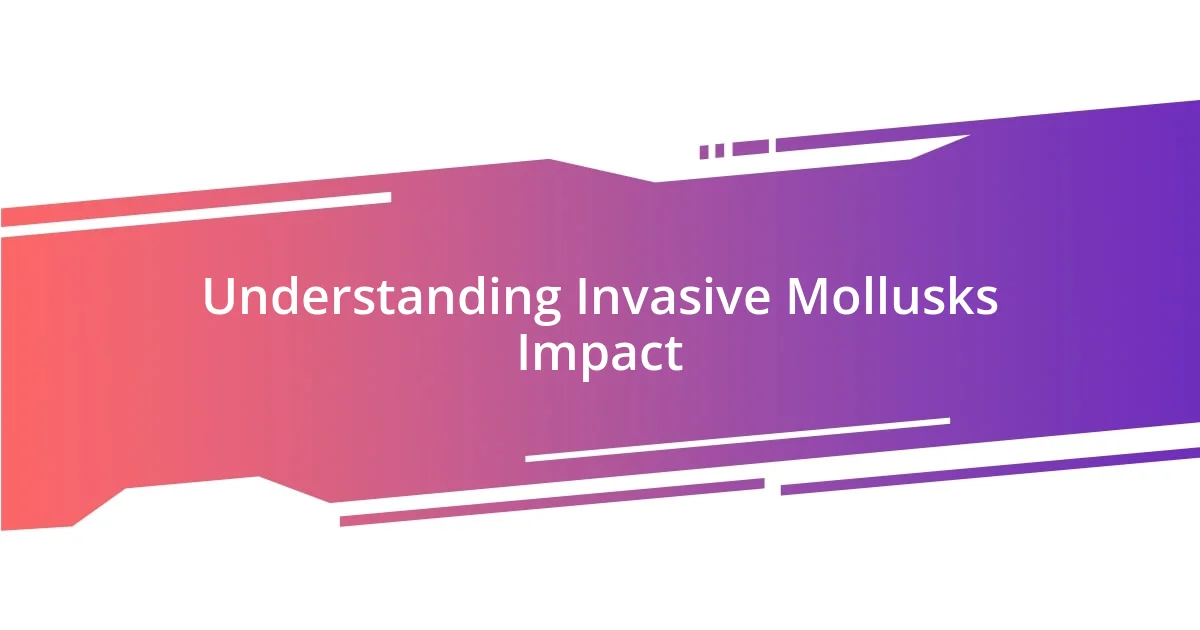
Understanding Invasive Mollusks Impact
Invasive mollusks can have staggering effects on local ecosystems. For instance, I remember visiting a beautiful lake where the water was crystal clear, teeming with diverse aquatic life. Now, that same lake struggles to support its native species because zebra mussels outcompete them for food and habitat. Doesn’t it make you wonder how quickly nature can change when one species takes over?
The economic ramifications are equally concerning. I once spoke with a fisherman who lamented how invasive species had depleted fish populations in his area, impacting his livelihood. How profoundly frustrating must it be to watch your trade suffer due to a guest that overstays its welcome?
Beyond economic and ecological concerns, these mollusks often disrupt recreational spaces, transforming vibrant areas into uninviting landscapes. I’ve seen beaches choked with heavy mats of invasive species, making once-enjoyable outings a struggle against not just the elements but the casualties of our ecosystems. Isn’t it heartbreaking to think that these changes can happen in our lifetimes?
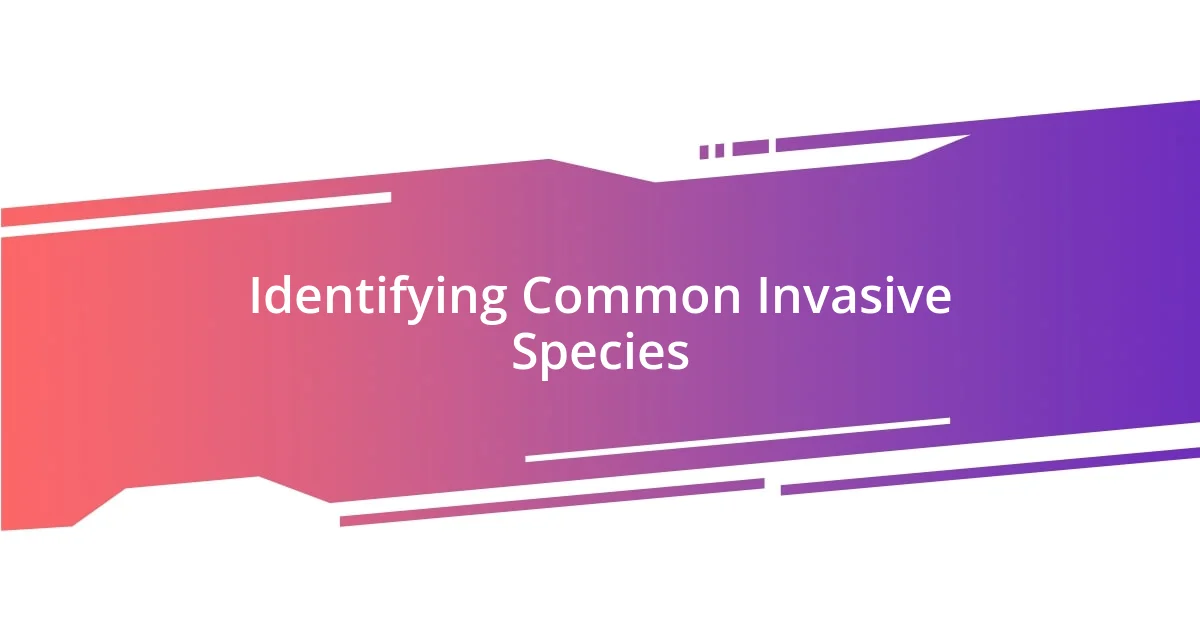
Identifying Common Invasive Species
Identifying common invasive species can be a daunting task, especially when these mollusks blend seamlessly with local fauna. I recall a day spent at a nature reserve, where an enthusiastic guide pointed out how to distinguish native clams from the notorious Asian clam. It was eye-opening to see the subtle differences, yet critical in understanding how to manage their spread.
Here are a few invasive mollusks to look out for:
- Zebra Mussels (Dreissena polymorpha): Small, striped mollusks that often cluster on surfaces, notably boats and docks.
- Quagga Mussels (Dreissena rostriformis bugensis): Recognizable by their more rounded shape, quagga mussels can outcompete native species for resources.
- Asian Clams (Corbicula fluminea): Often found in freshwater, these clams have a distinct yellowish to brown shell and can reproduce rapidly, posing a threat to native species.
It’s fascinating, yet disheartening to think about how even the tiniest detail can be the difference between thriving ecosystems and those in peril. During a wetland survey, I couldn’t help but feel a mix of awe and sadness as I noted the stark contrast between the vibrant native species and the invasive mollusks that we were diligently cataloging.
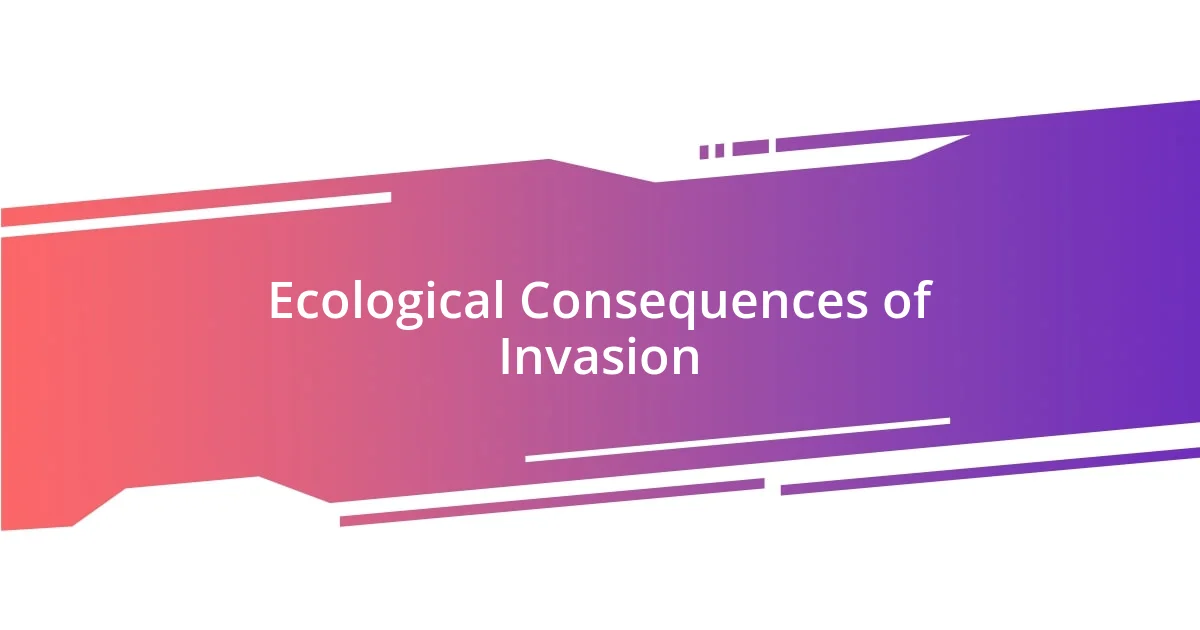
Ecological Consequences of Invasion
Invasive mollusks wreak havoc on their adopted ecosystems, often leading to a significant decline in biodiversity. I remember once kayaking through a river that was thriving with native fish and aquatic plants. After several years, I returned only to find the river dominated by invasive snails, leaving little room for the species I had previously admired. It’s alarming to realize just how quickly biodiversity can be compromised when an invader settles in.
Another profound consequence of their invasion is the alteration of food webs. I experienced this firsthand during a research project. As we examined the impact of the invasive New Zealand mudsnail, it became clear that these tiny creatures were outcompeting native invertebrates for food resources. Observing the sheer number of mudsnails and realizing the direct effect on the existing ecosystem left me feeling uneasy. If invasive species can disrupt these intricate relationships, what will be left for generations to enjoy?
The physical structure of habitats can also change dramatically due to invasive mollusks. For instance, I once visited a damp coastal area where native mussels formed strong reefs, providing shelter and nourishment for various marine life. Those reefs have since been overrun by a more aggressive invasive species, leading to erosion and habitat loss. Can you imagine the loss of such a vital ecosystem? The emotional impact is tangible when thinking about the ripple effects on all the creatures that relied on that habitat.
| Invasive Mollusk | Ecological Impact |
|---|---|
| Zebra Mussels | Outcompete native species and clog water intake systems, leading to habitat degradation. |
| Asian Clams | Rapid reproduction disrupts food availability for other aquatic life. |
| Quagga Mussels | Transform ecosystems by altering nutrient cycling and physical habitat structures. |
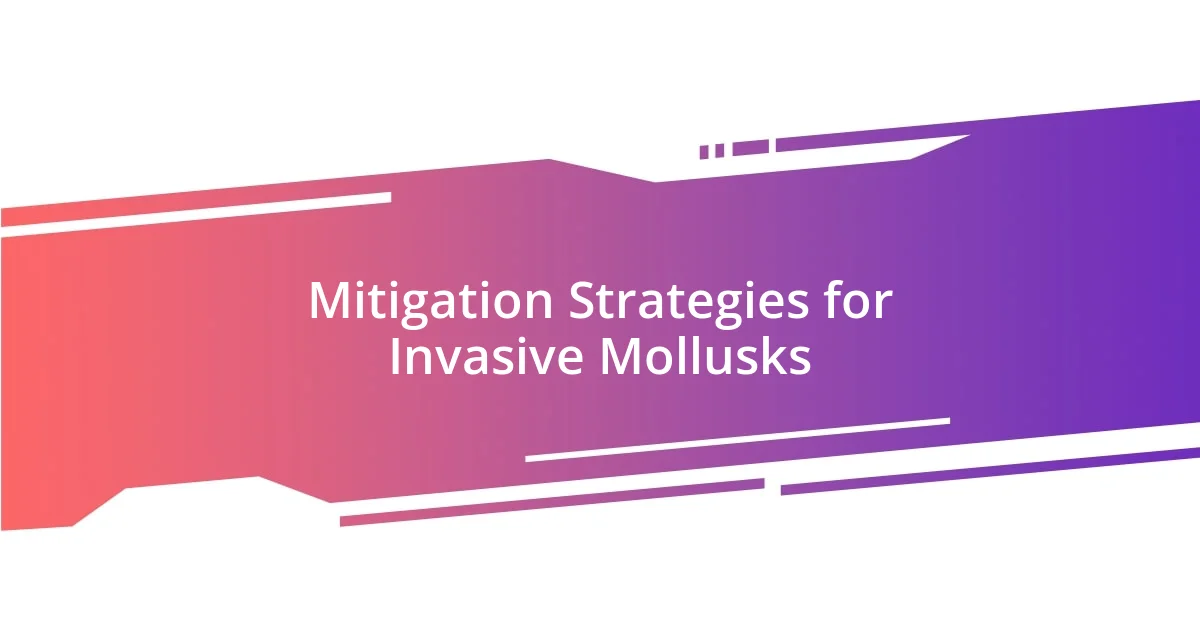
Mitigation Strategies for Invasive Mollusks
One of the most effective mitigation strategies for invasive mollusks is implementing robust monitoring programs. I recall participating in a citizen science project where volunteers tracked the spread of zebra mussels in local waterways. It was amazing to see how collective efforts could enhance our understanding of these invaders. Wouldn’t it be fantastic if more communities got involved? The data collected not only supports research but also informs timely interventions.
Physical barriers can also play a crucial role in controlling these invasive species. I’ve seen firsthand how installing screens at water intake points helps prevent the spread of larvae. Watching a once-infested area slowly recover after such measures was immensely satisfying. It makes one think—what small changes can we adopt that might yield significant results for our local ecosystems?
I can’t overlook the importance of education and outreach in combating invasive mollusks. I remember a workshop I attended where experts explained the impact of aquarium releases on local bodies of water. It struck me how easily well-intentioned pet owners can unknowingly introduce these threats into their ecosystems. Engaging the public in these conversations can empower individuals to make informed decisions—don’t you think the ripple effect on prevention could be monumental?
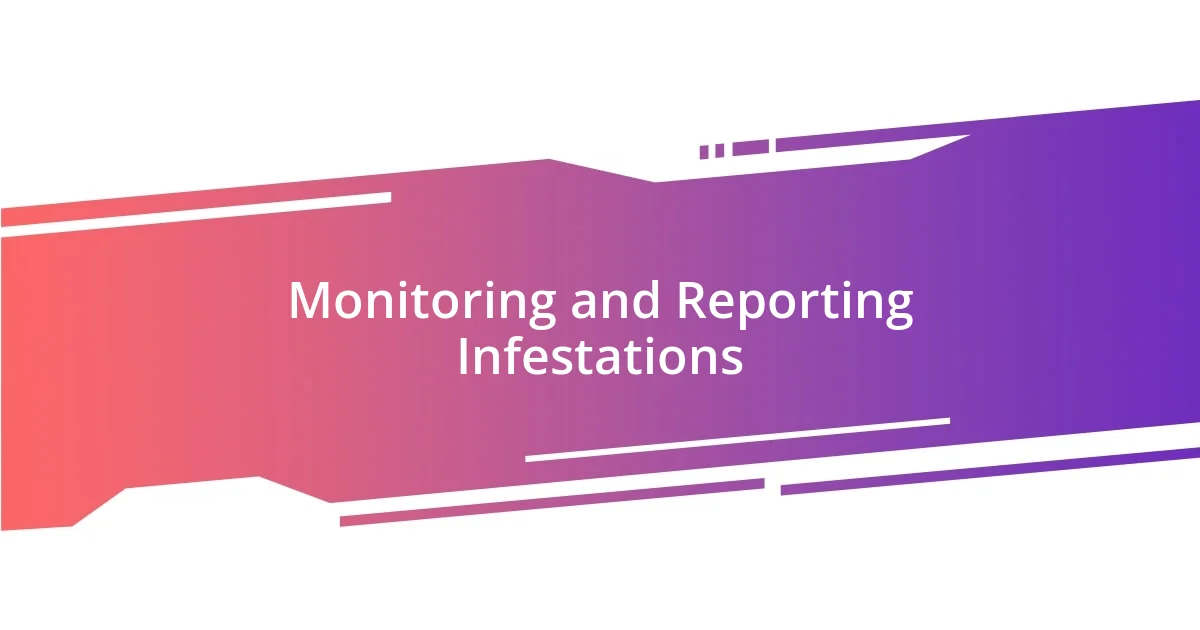
Monitoring and Reporting Infestations
Monitoring invasive mollusks requires a keen eye and timely action. I remember one hot summer when I joined a local team conducting water surveys. Each sample collected told a story, helping us spot early signs of infestation before it spiraled out of control. How did we manage to stay ahead? It was all about consistent, precise monitoring that I deeply believe every community should prioritize.
Self-reporting from the public has become invaluable in managing infestations. There was this moment when I received an email from a friend who discovered some unusual snails near her pond. Her concern sparked a neighborhood investigation, leading to swift action and eradication efforts. Can you imagine how different the outcome could have been without that initial alert? Empowering people to report potential sightings can create a self-sustaining cycle of vigilance.
Regular reporting to relevant authorities bolsters larger efforts in addressing invasive mollusks. During an environmental workshop, I learned that researchers rely on local data to strategize their control measures. Sharing findings not only raises awareness but also fosters collaboration across regions. It’s amazing how each of us plays a part; don’t you think that sharing our small observations can lead to significant changes in invasive species management?
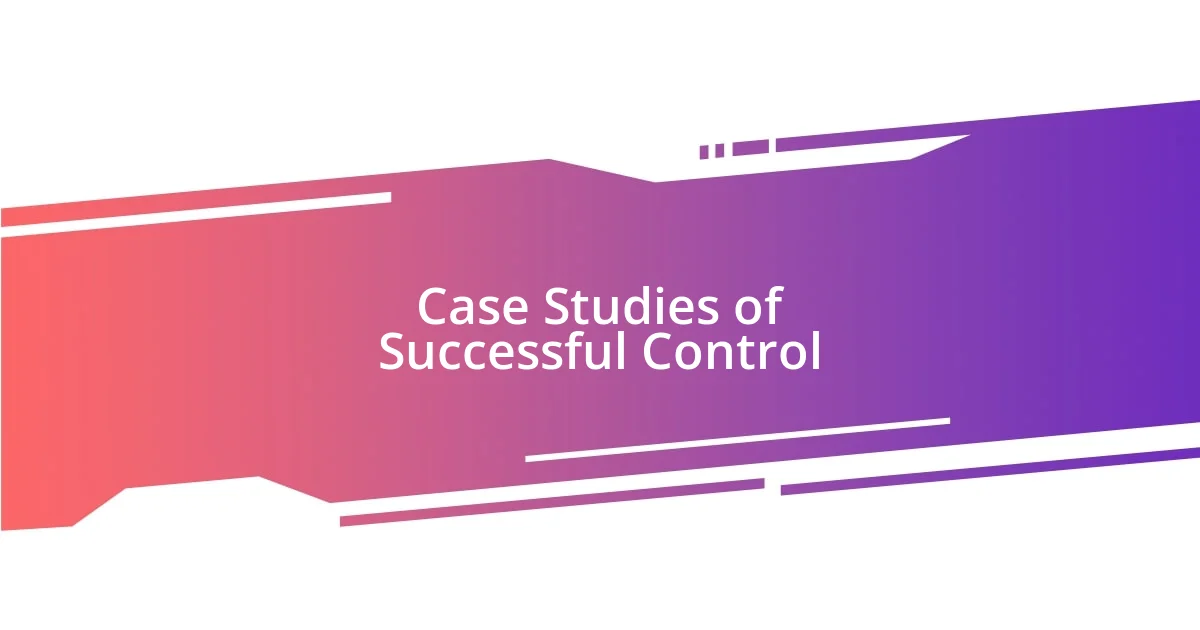
Case Studies of Successful Control
I remember a fascinating case study in the Great Lakes where researchers successfully reduced zebra mussel populations by introducing a specific species of native predator. It was inspiring to see how intentional ecological balance can be restored when we align with nature. I often wonder, could similar strategies be applied elsewhere, and how many other native species have roles to play in this delicate dance of control?
In another instance, I was part of a collaborative effort that focused on draining and decontaminating areas heavily infested with Asian clam. The meticulous planning and execution paid off when we observed a noticeable decline in clam numbers over the following seasons. That feeling of seeing local biodiversity begin to recover was exhilarating! It really makes you think about the power of persistence in these control strategies, doesn’t it?
A report from a group tackling the invasive New Zealand mud snail in Oregon particularly caught my attention. They organized community cleanup days where volunteers not only physically removed snails but also engaged in creating awareness about the species’ impact. It was incredible to witness how education turned into action; I can still recall the palpable enthusiasm in the air as families worked together. Isn’t it remarkable how grassroots efforts can lead to successful outcomes?
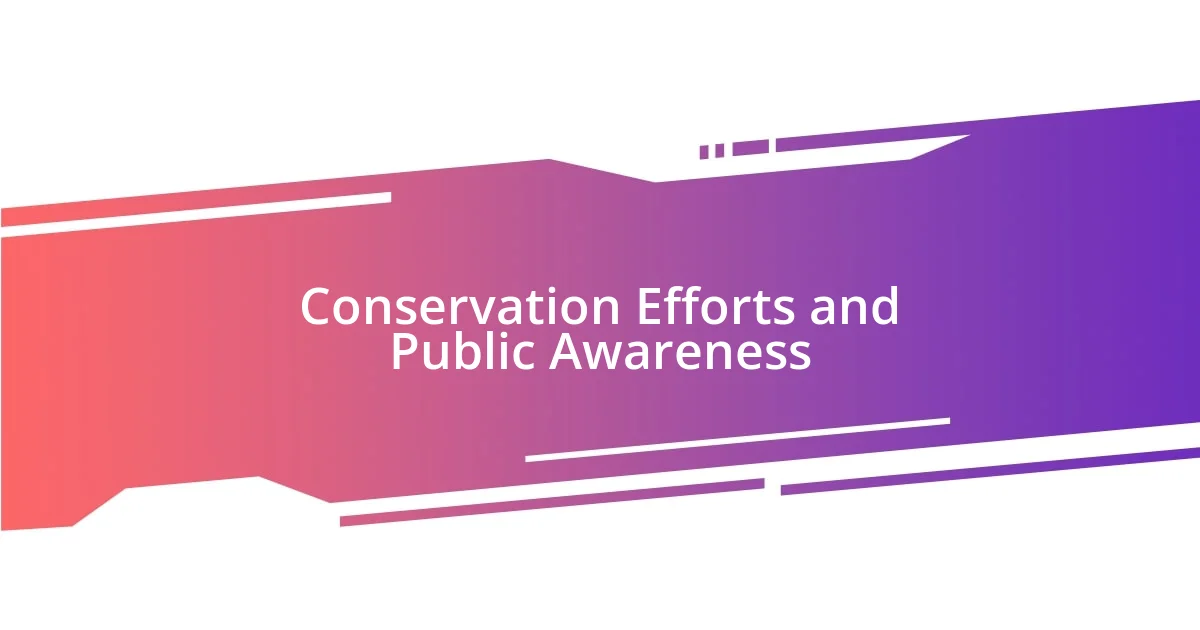
Conservation Efforts and Public Awareness
Conservation efforts for invasive mollusks significantly depend on public awareness and participation. I distinctly remember attending a local event where experts explained how invasive species affect ecosystems. The energy in the room was infectious, as attendees began sharing their own experiences and concerns. It made me think—how often do we overlook our role in these environmental issues?
One memorable initiative was a community outreach program where local schools engaged students in learning about invasive mollusks through interactive workshops. I was invited to speak at one of these sessions, and it was heartening to see young minds connect the dots between classroom knowledge and real-world impacts. Their excitement reminded me that the next generation holds the key to sustainable conservation. Isn’t it uplifting to witness such enthusiasm?
Moreover, social media campaigns have emerged as a valuable tool in raising awareness and mobilizing communities. I once caught wind of a hashtag promoting a “Mollusk-Monitoring Month,” where people shared their observations and tips online. It was inspiring to see individuals from various backgrounds contribute and learn from each other. This experience solidified my belief that public engagement is crucial; after all, who better to protect our environment than those who live in it?
